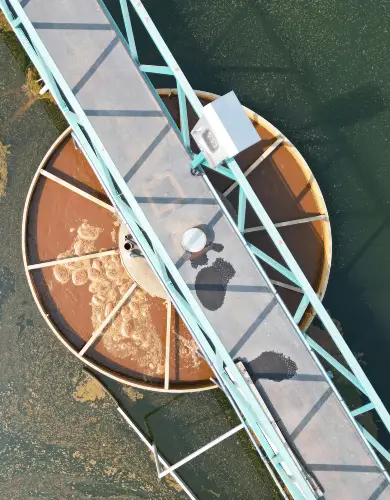Understanding the Water Industry
The British water industry ensures that millions of people across the country have access to safe drinking water. The industry supplies water and removes sewage from over 25 million properties, and employs over 100,000 people.
In this article, we’ll discuss the key issues facing the British water industry today. We will cover:
- British water industry structure and ownership.
- Regulatory framework of the British water industry.
- Domestic and business water suppliers in Britain.
- The financial state of the British water industry.
- Environmental challenges in the British water industry.
British water industry structure and ownership
The British water industry is privately owned and partially deregulated. To understand its structure and ownership, it is essential to begin with its history.
History of the British water industry
In the early 1900s, the water industry was highly fragmented, with over 1,000 companies supplying freshwater and sewage services in small local areas.
Severe droughts in 1959, followed by flooding in 1960, prompted the government to develop a more coordinated approach to water resource planning, established in the Water Resources Act 1963.
By 1970, the responsibilities of maintaining the water network had been consolidated into the 12 water companies that manage the network today.
Water market privatisation
In 1989, the water industry was privatised, with the government selling its stake in the regional water companies to private investors.
To ensure that the interests of the population and the environment would continue to be prioritised, the government established regulators to monitor the privatised water companies.
Water market deregulation
Following the deregulation of other utilities, the government introduced competition between business water suppliers to encourage better customer service and lower prices.
Deregulation occurred in 2008 for Scotland and in 2017 for England and Wales. The deregulation process separated business water suppliers from infrastructure management.
The domestic water market remains regulated. Households are invoiced directly by the local water company that manages the region’s water infrastructure.
Regulatory framework of the British water industry
There are many regulatory bodies involved in the UK water industry.
The regulators can be categorised into economic, environmental, and water quality regulatory bodies. In this section, we’ll explore the role of each.
Economic regulators
The economic regulators in the British water industry are:
- Ofwat – Economic regulator for the water industry in England and Wales.
- WICS – Economic regulator for the water industry in Scotland.
The role of the economic water regulators is to:
- Protect the interests of water consumers by promoting effective competition.
- Ensure all organisations involved in the supply of water properly carry out their functions.
- Ensure there is sufficient private investment in infrastructure to protect future supply.
- Oversee the suppliers of water and ensure they deliver public value.
- Promote economy and efficiency in the water sector.
- Regulate the bills levied by water suppliers on consumers and businesses.
- Regulate business water rates with a price cap.
- Approve annual price increases by the water companies.
- Managing the process for business water suppliers going bust.
- Oversee the role of MOSL, the deregulated water market operator.
Environmental agencies
The environmental regulator bodies in Britain are:
- Environment Agency – Environmental Regulator for England.
- Natural Resources Wales – Environmental Regulator for Wales.
- Scottish Environmental Protection Agency – Environmental Regulator for Scotland.
The British environmental agencies monitor and enforce environmental standards, particularly the health of rivers, lakes, and coastal waters.
Their key responsibilities include ensuring that the water companies comply with environmental laws and issuing water abstraction rights.
Drinking water inspectorates
The regulatory bodies responsible for the quality of drinking water supplies in Britain are:
- Drinking Water Inspectorate – Regulator for England and Wales.
- Drinking Water Quality Regulator for Scotland – Regulator for Scotland.
The government has appointed these independent bodies to ensure the quality of drinking water supplied by British water companies.
Domestic and business water suppliers in Britain
In this section, we’ll summarise the roles of the companies and organisations involved in water supply within the British water industry.
Local water companies
The local water companies are regionally appointed organisations that own and operate the water infrastructure in their areas, including reservoirs, pipes, water connections, and sewage treatment plants.
England and Wales are divided into eleven regions, each served by a separate water company. Please refer to Ofwat’s guide to determine which water company operates in your region. Scotland has a single water company, Scottish Water.
These wholesalers collect and store water, treat it to drinkable standards, and then pipe it to homes and businesses. They are also responsible for removing and treating wastewater, ensuring it is safely returned to local reservoirs.
For more information on the infrastructure they operate, see our guide to British Water infrastructure.
In the regulated household market, the water companies also act as suppliers, billing individual households in their regions for the water they use.
For businesses, local water companies sell water on a wholesale basis to business water suppliers.
Business water suppliers
Business water suppliers are for-profit companies with a licence to supply water services to non-household users.
For businesses and other organisations, water supplies can be provided by any company holding a water supply licence.
The suppliers purchase water from the local water companies and then issue business water bills separately to individual businesses and organisations that they supply.
Business water suppliers are responsible for taking water meter readings to measure their customers’ water consumption. They are also the point of contact for water users and provide customer services.
In the deregulated water market, businesses can switch business water suppliers, which introduces competition among different suppliers.
At AquaSwitch, we specialise in offering a business water comparison service that helps businesses find the cheapest water tariffs available in the market.
The financial state of the British water industry
In recent years, there has been an intense focus on the financial state of the British water industry, particularly on the solvency of Thames Water. In this section, we’ll explain how Thames Water’s finances became so precarious.
Since privatisation, Thames Water has funded expansion and improvements in its infrastructure by issuing debt to bondholders.
Thames Water has recently struggled with financial performance due to the ageing of its infrastructure and fines it has received for pollution and leakage. This underperformance has increased the risk that it will be unable to repay its debts.
The water bills charged to homes and businesses in the Thames Water area are carefully controlled by Ofwat, meaning that Thames Water cannot simply raise its prices to meet its financial obligations.
In dealing with the financial state of water companies, the government and regulators are carefully balancing the need to protect consumers from rising bills while preventing the disorderly collapse of local water companies.
Environmental challenges in the British water industry
In this section, we’ll discuss the three most important environmental challenges facing the British Water industry.
Water scarcity
The water industry faces several challenges to ensure the long-term sustainability of water supply and sewerage services.
Although the British Isles may be famous for its rainfall, a combination of increasing population and climate change is exacerbating the problem of water scarcity.
The Environment Agency has predicted that in 25 years, the UK will not have sufficient freshwater to meet demand.
The unpredictability of British weather makes the water network particularly susceptible to shortages, with frequent long periods without rain that can occur at any time of the year.
Worryingly, climate change is intensifying these extremes, and East Anglia has already been classified as a semi-arid region.
The water industry is responding to these challenges with a dual approach of increasing supply and reducing demand.
The UK is working on improving water infrastructure to increase supply. In June 2021, approval was granted for Portsmouth Water’s £100m new reservoir at Havant Thicket, the UK’s first new reservoir in 40 years.
Additionally, the regulators demand annual improvements in water leakage statistics from the local water companies.
To reduce demand, the water industry is encouraging consumers to reduce water consumption through measures such as:
- Adoption of smart water meters to measure water consumption.
- Adoption of rising block tariffs to financially incentivise water efficiency.
- Providing information about the daily water footprint.
- Promotion of rainwater harvesting systems.
- Promotion of greywater systems.
Coastal and river pollution
In recent years, the British water industry has come under increasing pressure to reduce its pollution of British streams, rivers, and coastlines.
We have two in-depth articles dedicated to this subject:
- Sewage pollution into rivers: When sewage treatment works are overwhelmed, the Environment Agency permits British water companies to dump untreated sewage into rivers and the sea.
- Fertiliser pollution in rivers: The overuse of fertiliser in British agriculture is increasing the levels of nutrients flowing into rivers, encouraging algae blooms and disrupting wildlife.
The water industry plans to increase infrastructure investment to reduce its direct impact on river and coastal pollution.
Carbon emissions
The British water industry is highly energy-intensive, using approximately 3% of Britain’s overall energy demand to pump water and sewage around the country.
Find out more in our in-depth article on the environmental impact of the water industry.
The British water industry is adopting renewable energy sources to reduce its carbon footprint.
Several local water companies are investing in anaerobic digesters at sewage treatment sites, which generate renewable electricity by breaking down the organic material in wastewater.
Innovative new business water suppliers offer sustainable business water tariffs that offset the carbon footprint of water and sewerage services.

